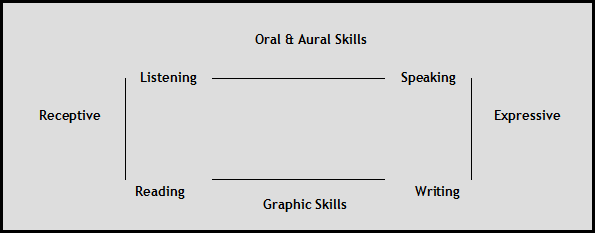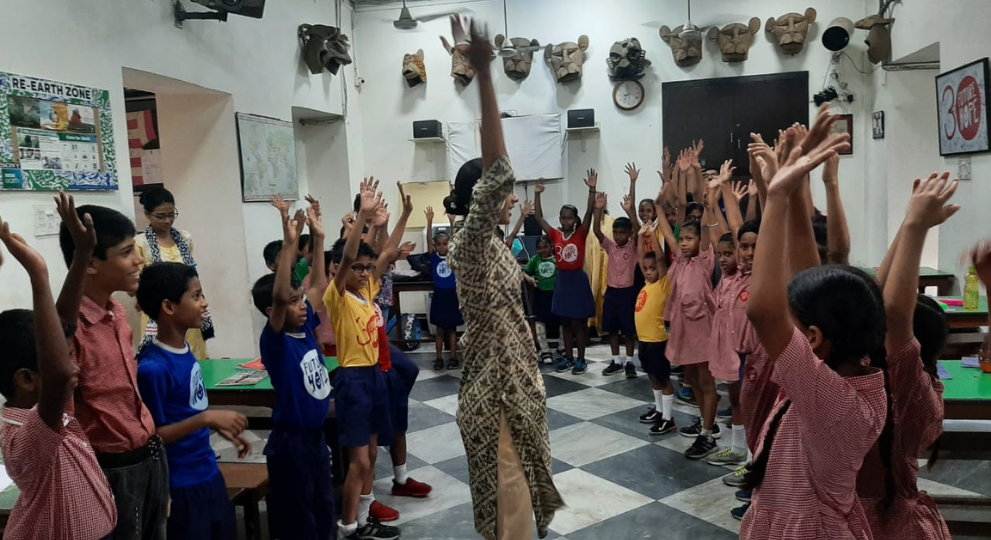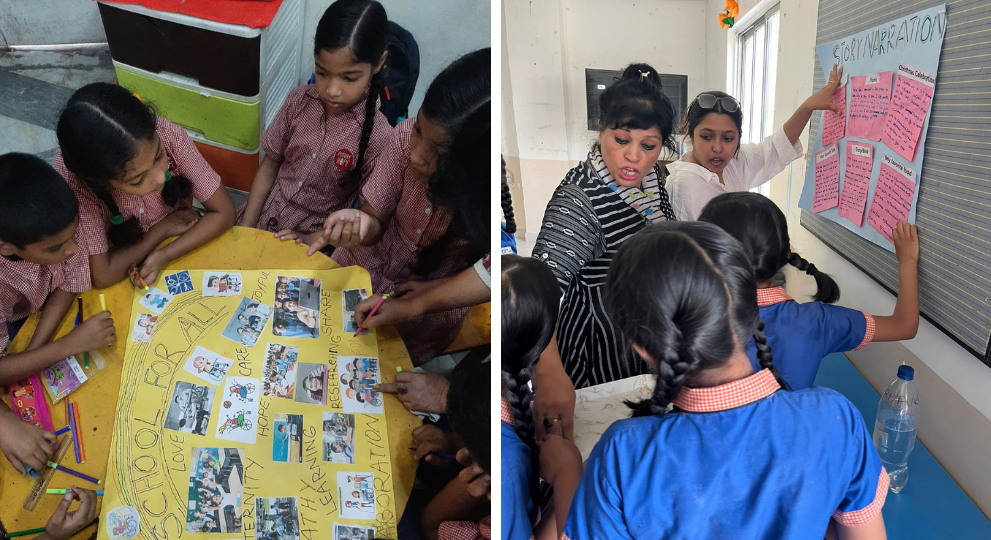
THE WECAN LEARNING CAMPS
Language learning is crucial in itself, and also as the basis of communication and comprehension. it also acts as a catalyst for the sound understanding of other subjects, related concepts, and ideas. Unless and until a child has a strong hold on language, he/she would not be able to successfully grasp other subjects accurately. Therefore, language acts as a core competency, necessary for knowledge acquisition and understanding. Apart from being a medium of exchange of views, ideas and opinions, Language acts as the common thread which runs through and links each subject, each concept, and each notion to one another.
Listening, speaking, reading, and writing are the underlying competencies in the development of Language skills. A few more ancillary skills like vocabulary, phonetics, grammar, understanding, and self-evaluation also contribute to the process.

With all the above criteria in mind a small step towards this direction was taken by WeCan Learning Resource Institute where a 3 -day intensive learning camp (English)was designed and is being conducted in schools. The focus is to develop core competencies required for language acquisition and understanding. The Camps demonstrate how this can lead to a substantial improvement in children’s performance, their self-confidence, self-worth and articulation skills.
Objectives:
- The first and most important objective in providing learning camp is to ensure that the children’s skills are brought up to par with the class they belong to
- Learning camp provides an opportunity for immersion in listening, speaking and cognitive reading and writing activities for the children who are acute language learning deficiencies.
- The camp is designed in a very participatory and activity-oriented way as the students learn better through activities and hands on experiences within a stipulated time
Role of Camps in Remediation:
- Learning camps are conceptualised to bridge the knowledge gaps in an intensive manner within a short time frame. Inability to read, or lack of basic literacy skills in one’s mother tongue – a subject that it also the medium of instruction is a very big challenge for a child who finds that with every passing day the gap between what he/she knows and what he/she is expected to know, keeps increasing faster and faster. Camps at the beginning of an academic year are a base bridging strategy to help children overcome those areas of doubt and complexity that comes in the way of acquisition of new knowledge. The camps are usually of 3 to 5 days duration giving children an opportunity to get immersed in a language learning situation for 5 hours a day successively.
- The Baseline paper is set in a manner that is able to capture the learning gap.
- The instructional design is targeted as per their learning needs. It also takes into consideration the fact that different children have different learning styles. Individual targets are set and teachers sit together at the end of the day discuss among themselves the experiences of achieving those targets. Teachers at the learning camps believe that though the camps have a grave mission to accomplish, but that should not alleviate the lighter moments of life. And that’s why activities such as painting, music, role play, debates and discussion form an integral part of these camps too. However, the activities should have a direct link to the main task at hand. The famous educationist Mr. Howard Gardner talks about multiple intelligences that human beings are capable with. There are seven types of intelligences- verbal-linguistic, logico-mathematical, spatial, musical, kinaesthetic, interpersonal and intrapersonal. The activities of the camp allow for these different types and offer a wide range of choices to the children.
The Camp design:
The Camp demonstrates how English can be used in a non-threating manner through fun filled activities, using audio visual resource, songs, role play, dramatization and art & craft and all these can stimulate children to use it without fear or anxiety, as a means of communication.
Sample lessons can be taken from the textbooks to design fun activities and worksheets. There was also provision for creative work which can be linked to their lessons where children are encouraged to listen-speak-read-write the language. The use of multi-sensory channels of learning such as music, games, creative work makes it vibrant and helped to raise the motivation level of the children.
Methodology:
A three-day learning camp has a definite structure and schedule, a programme of activities, weCan team designed a camp package consisting of worksheets, TLMs and a transaction plan for the teachers where details of all the sessions, activities, time slots etc. are given.
During the camp, we follow a meticulous routine each day, with four hours each day. As compared to regular 40 minutes of language class the intensive focus on English is of immense help to the children. Each day the children were encouraged to complete some designated worksheets in addition to the activities and tasks specially assigned to polish the English language skills.
Some activities are pure group activities that foster peer learning, while others are meant for each individual child. Apart from these there are some inter-group activities too that fostered a healthy competition between the children by encouraging them to learn more.
During the various group activities, we observe high degree of leadership skills amongst the children. The children discuss their problems with their friends in the group, come up with ideas and solutions.
Some of the activities designed are-
Book Reading, Vocabulary and Word Association Games, Story Telling, Group work and making presentations, Silence Activity, Meditation, Word Association Game, Making the Word Wall
All the above, are incorporated in an age-appropriate manner in the Camp. It is a heartening experience to perceive the young learners’ enthusiasm, zeal and to top it all their excellent teamwork. Along with all these the young campers never forget to enjoy themselves to the fullest. If these strategies are meaningfully integrated with in regular classroom transactions, significant learning enhancement will be visible.
PHOTOGALLERY:







